
Punjab-based father-son duo (Sarbjit Singh Bahga, Architect and Arshdeep Bahga, Engineer) have set up a model organic farm in Village Ghel, District Fatehgarh Sahib, Punjab, India, intending to re-introduce the traditional practices of organic farming with a blend of modern technologies and sustainable agricultural practices.
Bahgas had a strong desire to return to their roots and create a sustainable and bio-diverse organic farm that could serve as a model for the farmers in the area.
To share their experiences, they have authored a book, “Building a Sustainable and Bio-Diverse ORGANIC FARM: Case Study of a 1 Acre Model Farm in India”. The book covers the authors’ experiences of developing the farm and growing healthy, organic, and natural, farm-fresh vegetables, herbs, fruits, grains, pulses, and oilseed crops. It also covers various organic cultivation principles and practices such as organic manures, composts, bio-fertilizers, crop rotation, mulching, and biological pest control measures. The readers can adapt these practices to grow vegetables and fruits ethically without synthetic fertilizers, pesticides, fungicides, weedicides, and growth regulators.
A Ground Report

The authors spent time with farmers in the region and realized that using chemicals to increase crops’ yield had a devastating impact on the land. Due to a lack of knowledge and experience, many farmers have destroyed their lands with the heavy use of chemicals. Over-exploitation of groundwater resources has resulted in the depletion of the water table.
Bahgas grow healthy, organic, and natural, farm-fresh vegetables, fruits, grains, pulses, and oilseed crops at their farm. The farm has been set up as a model organic farm adopting best management practices for sustainable agricultural production.
Making Way for Organic Farming
Farmers practising conventional and intensive agriculture are often reluctant in adopting organic farming. Through this book and the organic farm, the authors aim to bring awareness about organic and natural farming practices and prove that organic farmers can maintain a balance between farm expenses and farm outcomes by using integrated farming. The authors demonstrate various organic and natural farming practices that can increase soil fertility, reduce expenditure on expensive chemical fertilizers and pesticides, and increase crop yields.
This book can serve as a handy reference for readers who wish to start their organic farm. It is structured into three parts and a total of 44 chapters. Part I covers an introduction to the farm and the best practices being adopted. Part II covers the farm’s essential features, including the farm layout, farmhouse design, off-grid solar system setup, vegetable & herbs garden, fruit nutrition garden, grains, pulses and oilseed crops area, chicken coop, farm equipment, and more. Part III covers the organic farming principles and practices being adopted at the farm, including composting, mulching, crop rotation, green manures, weed control methods, pest management, bio-fertilizers, bio-pesticides, irrigation techniques, nutrient management, minimum tillage, companion planting, pheromone and sticky traps, friendly bugs, and more.
Working In Harmony with Nature
Bahgas grow vegetables, pulses, grains, and fruits ethically, without synthetic fertilizers, pesticides, fungicides, weedicides, and growth regulators. Their organic cultivation practices rely on organic manures and composts, biofertilizers, crop rotations, including legumes, minerals bearing nutrients and biological pest control measures. At the farm, they adopt the best practices of organic and natural farming and work closely in harmony with nature. They practice integrated farming using natural resources to balance farm expenses and income. They adopt biological pest control measures. By using the crop rotation technique, they increase the fertility of the land. Bahgas never burn farm waste as it increases pollution. Instead, it is used for mulching which increases the soil’s moisture-retaining ability and improves overall health.
Utilizing the Natural Resources
The shortage of water and electricity is a significant problem for the farmers. Bahgas are adopting rainwater harvesting and drip irrigation approaches to conserve water at their farm. An off-grid solar system has been set up to ensure a farm’s cheap and continuous energy supply.
Bahgas feel that we must work in harmony with nature and utilize all the naturally available resources. Undoubtedly, the food grown in such an environment can heal humanity and give a healthy future life.
The book “Building a Sustainable and Bio-Diverse ORGANIC FARM: Case Study of a 1 Acre Model Farm in India” has been conceived and produced as a coffee table book. It has been published by White Falcon Publishing, Chandigarh and is available worldwide on all channels of amazon. It is hoped that this treatise will be helpful to posterity and will encourage many youngsters to adopt the practice of organic farming.

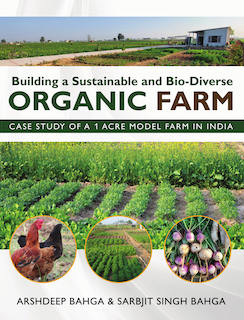

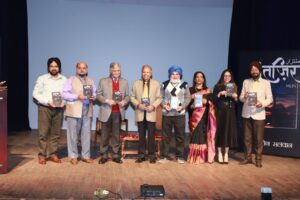
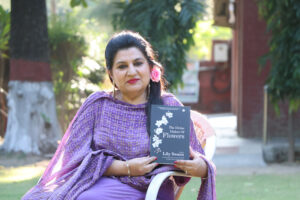
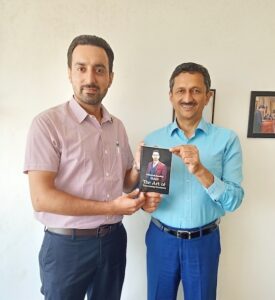
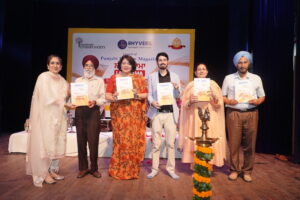
Comments are closed.